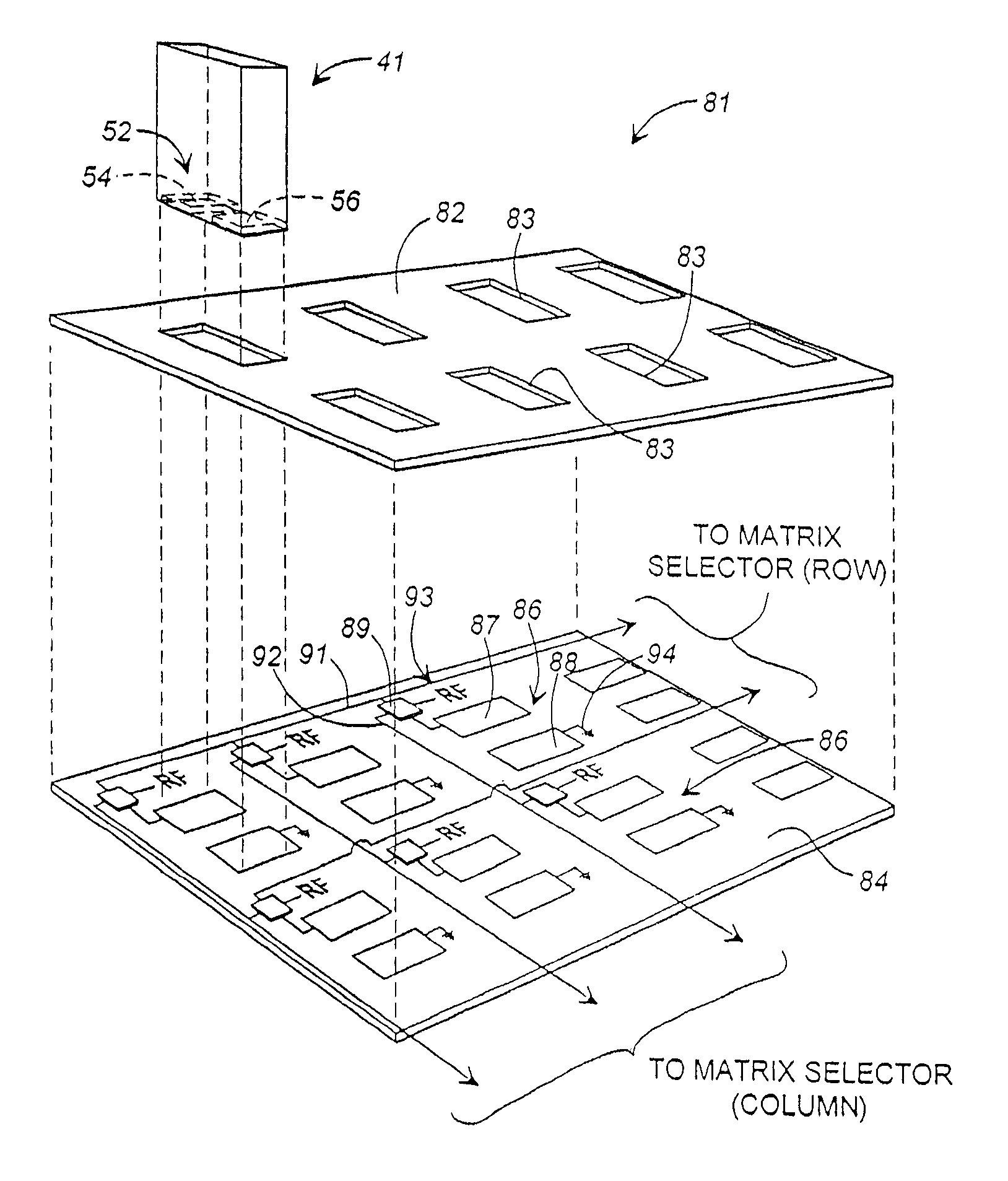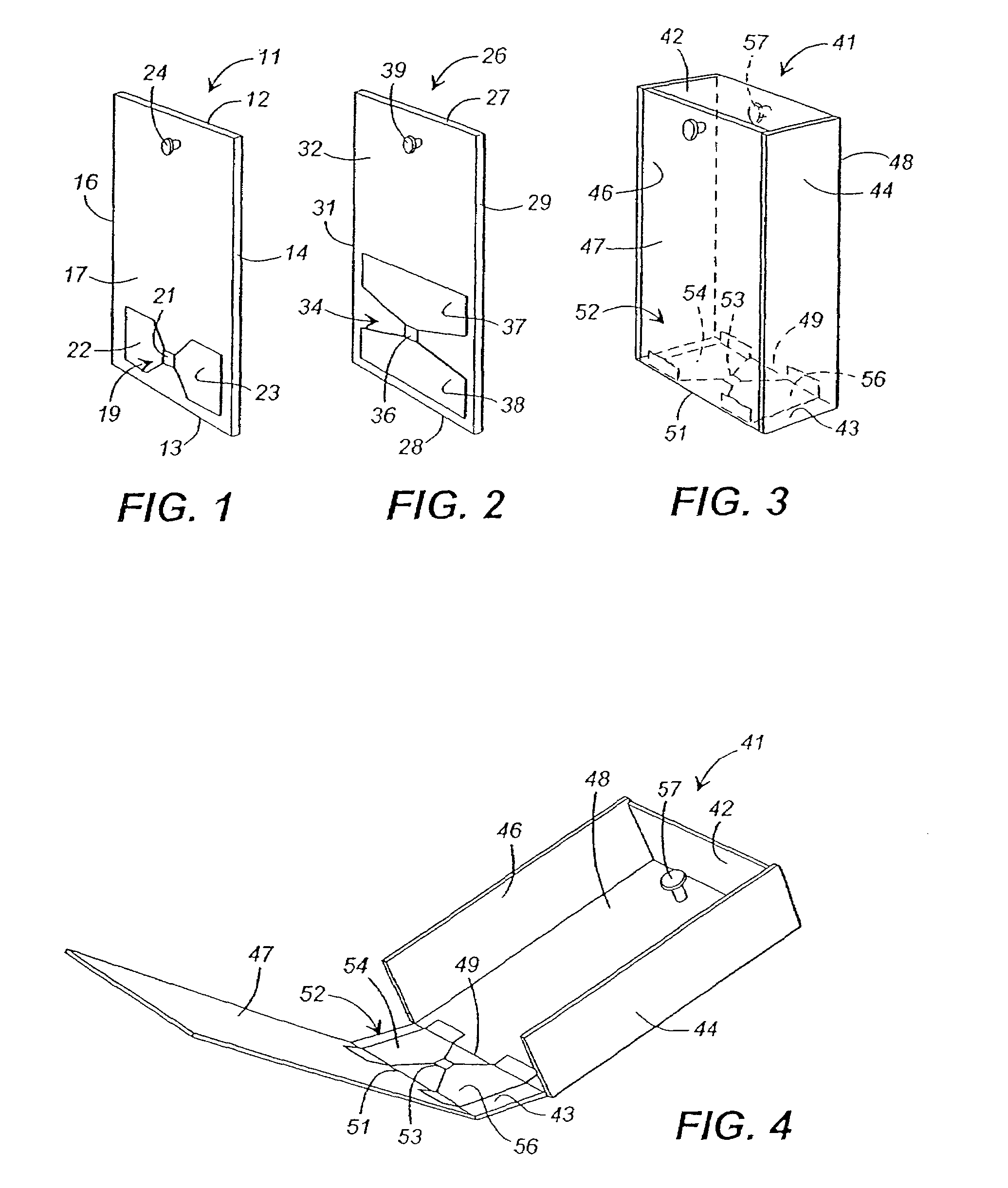Object tracking system with non-contact object detection and identification
a non-contact, object technology, applied in the direction of individual entry/exit registers, mechanical actuation of burglar alarms, instruments, etc., can solve the problems of requiring precision in the placement and orientation of contact pairs, affecting requiring relatively complex and laborious fabrication, etc., to achieve the effect of less effect on the integrity and reliability of the system, less manufacturing cost, and less manufacturing cos
- Summary
- Abstract
- Description
- Claims
- Application Information
AI Technical Summary
Problems solved by technology
Method used
Image
Examples
Embodiment Construction
[0036]The present invention will be described in detail within the general context of a key or small item tracking system. In such a system, keys to vehicles are attached to key cards (or placed in or on the outside surface of small containers), which are checked out from and replaced in a centrally located storage unit. Each key card is provided with an RFID tag. The storage unit preferably has a top panel formed with an array of receptacles for receiving the key cards. A backplane is disposed beneath the panel and has an array of sensors for detecting and identifying key cards located in the receptacles of the storage unit. This configuration is discussed in detail in my issued patent, which provides background for the discussions that follow.
[0037]Even though a preferred embodiment of the invention is as a key or small item tracking system, it should be kept in mind during review of the detailed description that follows that the invention has a wide variety of uses wherever there...
PUM
 Login to View More
Login to View More Abstract
Description
Claims
Application Information
 Login to View More
Login to View More - R&D
- Intellectual Property
- Life Sciences
- Materials
- Tech Scout
- Unparalleled Data Quality
- Higher Quality Content
- 60% Fewer Hallucinations
Browse by: Latest US Patents, China's latest patents, Technical Efficacy Thesaurus, Application Domain, Technology Topic, Popular Technical Reports.
© 2025 PatSnap. All rights reserved.Legal|Privacy policy|Modern Slavery Act Transparency Statement|Sitemap|About US| Contact US: help@patsnap.com



